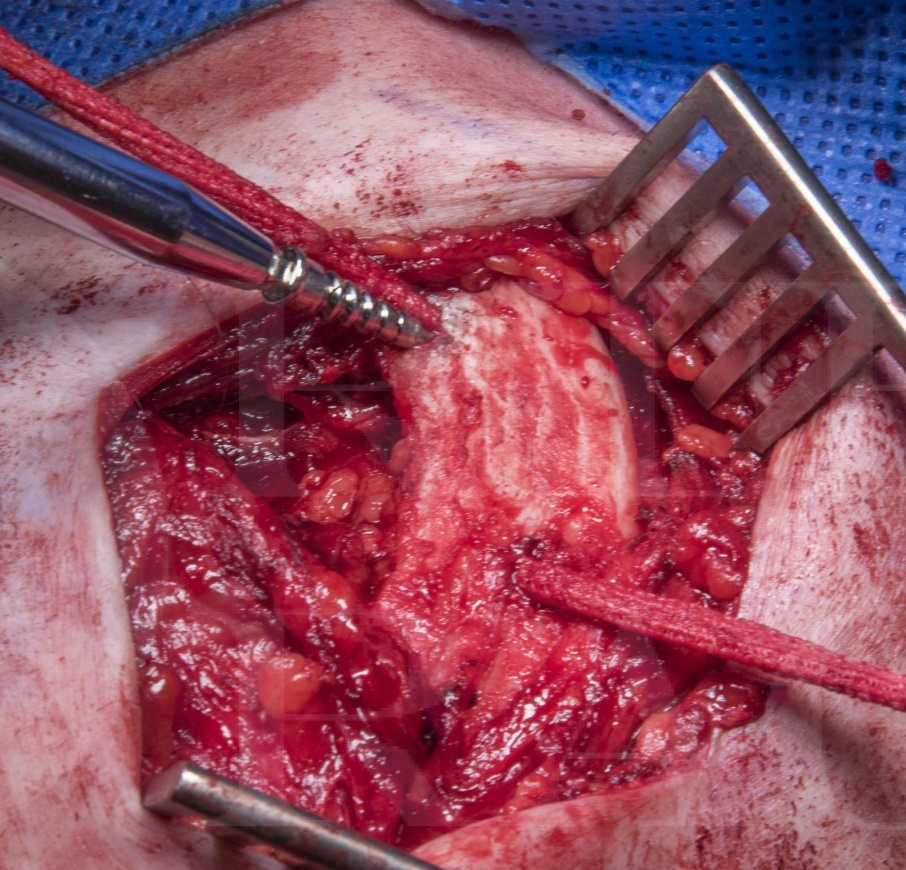LARS ligament reconstruction stabilisation acromioclavicular joint
Overview

Subscribe to get full access to this operation and the extensive Shoulder & Elbow Surgery Atlas.
Learn the LARS ligament reconstruction stabilisation acromioclavicular joint surgical technique with step by step instructions on OrthOracle. Our e-learning platform contains high resolution images and a certified CME of the LARS ligament reconstruction stabilisation acromioclavicular joint surgical procedure.
The LARS ligament technique is one of many described to reconstruct the coracoclavicular ligaments of the shoulder for a dislocated or subluxed acromioclavicular joint. This is an open technique passing the artificial ligament underneath the coracoid and securing it to the distal clavicle through drilled tunnels at 90 degrees to each other and secured using interference screws. The LARS ligament is made of PET (polyethylene terephthalate) and for ACJ come sin two sizes, LAC20 with strength 1000N and the LAC30 with strength 1500N. It can be used for repair and reconstruction of the acute AC joint dislocation or for stabilisation of the more chronic injury by providing a scaffold for natural tissue ingrowth. Like other sub-coracoid techniques it removes the need to drill holes into the coracoid process which are sometimes narrow and carry with them a risk of fracture. The fixation using interference screws is strong and reduces the risk of attritional wear notching the clavicle seen in some cases when an artificial ligament is looped around the clavicle.
Author : Mark Crowther FRCS (Tr & Orth)
Institution: The Avon Orthopaedic centre , Bristol, UK.
Clinicians should seek clarification on whether any implant demonstrated is licensed for use in their own country.
In the USA contact: fda.gov
In the UK contact: gov.uk
In the EU contact: ema.europa.eu



















